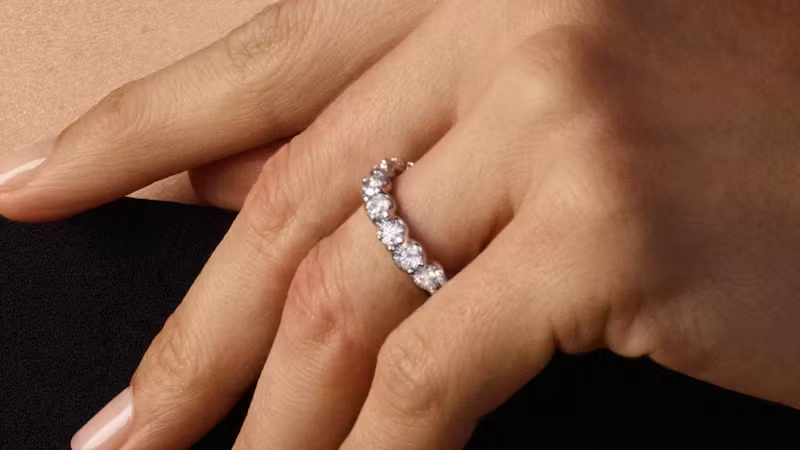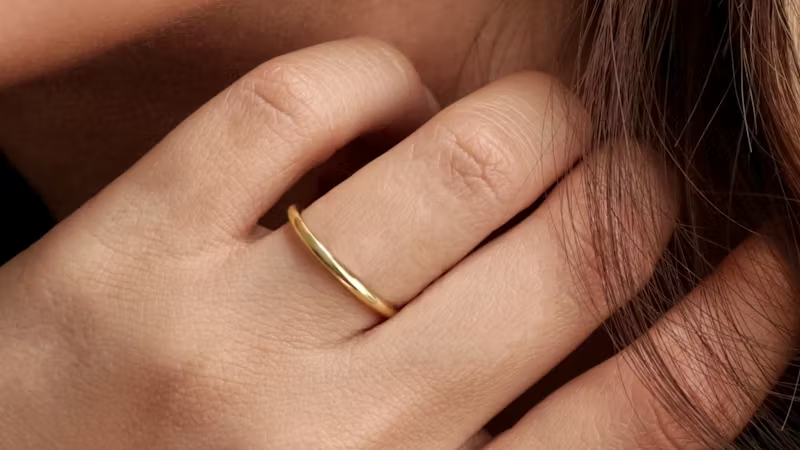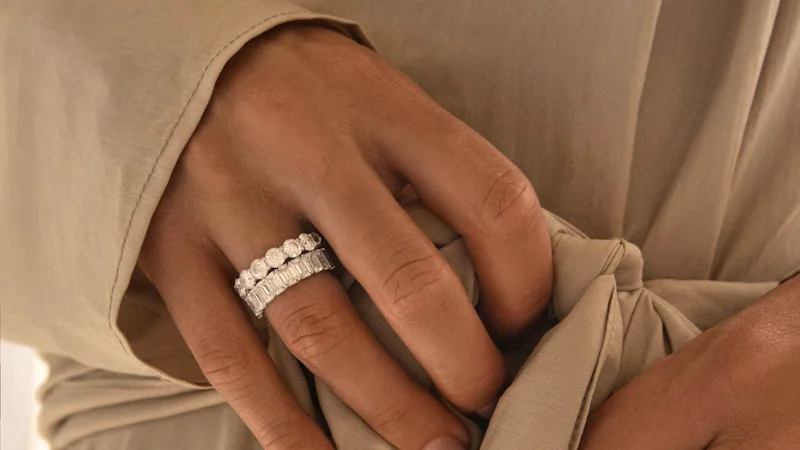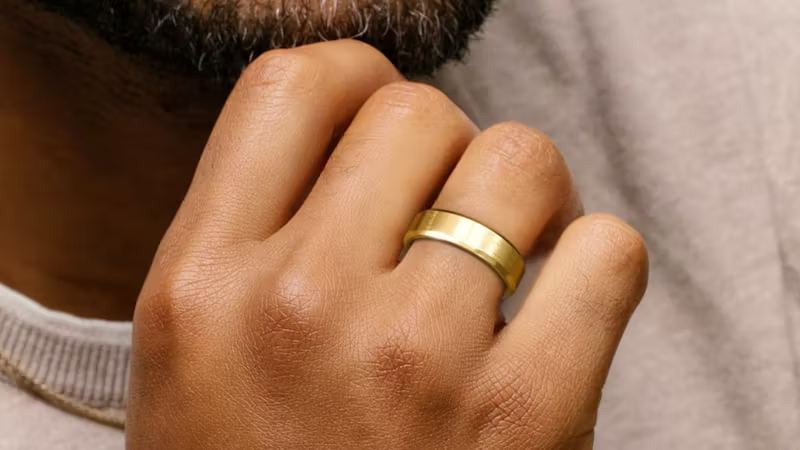Impeccable origin
Stacking wedding bands

Don’t see the wedding band you like? We'll make you a custom piece.
WEDDING RINGS & BANDS GUIDES
Wedding Ring Sets Style Guide
Discover engagement and wedding ring sets for every style and find the one that’s right for you.
Wedding Ring Stacking Guide
A wedding ring stack is an expression of your style, a manifestation of your love story, and a celebration of your own personal journey.
Wedding Ring Guide
VRAI designs unisex wedding rings fit for any style. Read on to discover the diamond wedding ring meant just for you.
Stacking wedding bands FAQs
Traditionally, a wedding ring is worn on your left ring finger. If you also wear an engagement ring, the two are customarily worn together on this same finger, with the wedding ring going on first. However, only you and your partner can decide what finger you would like to wear your ring on.
Infinity and Eternity bands are wedding rings with diamonds that go all the way around the band. Infinity bands have a pavé setting for small diamonds called melee diamonds. Eternity bands feature Round Brilliant diamonds weighing in at an average per stone of 0.05 ct for petite bands, 0.10 ct for medium bands, or 0.16 ct for large stones. Therefore, the diamonds in Eternity bands are larger in size than the melee diamonds featured in Infinity bands. This gives the Eternity bands a substantial look, and Infinity bands a more delicate look.
VRAI also designs Baguette Infinity bands, which feature an array of Baguette shaped VRAI created diamonds instead of the rounded melee diamonds.
Devotion bands can also feature an entire ring of diamonds, but they are nestled within a channel setting, meaning there are platinum or solid gold bands on either side of the round or baguette-shaped diamonds. Devotion bands are available in full or half diamond settings. Complement your band with a sparkling eternity ring or infinity band.
There is no set rule on how much you should spend on your wedding rings. Only you and your partner can decide what your budget on rings should be. However, many couples spend an average of 3% of their overall wedding budget on rings. Spending more or less depends on your personal preferences and what other details you plan on paying for on your wedding day.
Traditionally, an engagement ring is a platinum or solid gold band that features a solitaire diamond at its center. Many variations of this style exist, including three stone settings with a prominent solitaire diamond surrounded by side stones.
In the past, only one person in the couple — the individual proposed to — wears an engagement ring. This has changed in recent years as couples have decided to exchange pairs of engagement rings, or purchase another piece of fine jewelry alongside an engagement ring to signify their commitment.
A wedding ring is usually a platinum or solid gold band that lays flat against the finger, with no prominent stone at its head. It can be embellished with diamonds, but these are usually secured inside the ring’s setting, instead of being displayed on top with prongs.
An engagement ring is exchanged at the time of the proposal. Wedding rings are generally saved for the wedding ceremony itself.
Traditionally, if an engagement ring and wedding ring are worn together on the same finger, the wedding ring goes on first. But there is no right or wrong way to wear your rings together. The most important rule is to wear them in a way that is most beautiful and most comfortable to you. For some, this means stacking the two rings together. For others, this means wearing the rings on separate fingers or hands. Pair everyday wedding bands with stacking designs.
The best thing to do to prepare for wearing your engagement ring and wedding ring together is to measure the finger(s) where you’ll wear the rings. You should also try on the rings together, especially if they are stacked, to make sure they fit comfortably side by side. Always keep your engagement ring in mind when deciding on what wedding band works best for you, and know that the majority of VRAI’s engagement ring designs are crafted to pair flush with your wedding ring. Learn how to pair your band with a three-stone ring.
There’s no single rule for who should purchase the man’s wedding band. Traditionally, partners exchange rings, which can mean each person buys the other's band. Today, many couples choose wedding bands together and decide what feels most meaningful and intentional for them.
Yes, most wear their engagement ring on their wedding day. Traditionally, it is moved to the right hand during the ceremony so the wedding band can be placed closest to the heart. Afterward, many choose to wear both rings together on the left hand.
Many couples choose their wedding bands together, making it a shared experience that adds even more meaning to their union. But whether you choose together or separately is a personal choice.
Absolutely. Your engagement ring is a lasting heirloom that represents the beginning of your partnership. After the wedding, it’s typically worn alongside your wedding band. Engagement rings and wedding bands with VRAI created diamonds are designed to complement one another and reflect your continued commitment.
Traditionally, only one partner presents a ring during a proposal. However, some couples now choose to exchange engagement rings, especially if both partners want to wear a symbol of their commitment.
The engagement ring is traditionally worn on the fourth finger of the left hand—commonly called the "ring finger"—because it was once believed to have a vein that led directly to the heart. This tradition continues today as a symbol of enduring love. After the wedding, the engagement ring is typically worn stacked above the wedding band.



